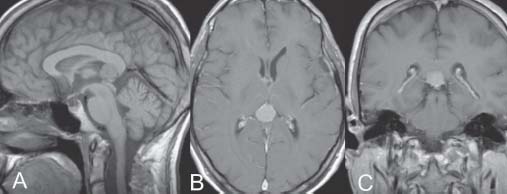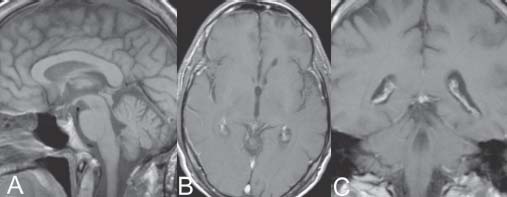Case 10 Velum Interpositum Meningioma Michel W. Bojanowski and Denis Klironomos Fig. 10.1 (A) Sagittal, (B) axial, and (C) coronal T1-weighted magnetic resonance images with gadolinium. Fig. 10.2 Postoperative (A) sagittal, (B) axial, and (C) coronal T1-weighted magnetic resonance images with gadolinium. You decide to obtain tissue for histopathologic analysis. The postoperative MRI (Fig. 10.2) reveals complete resection of the tumor. The histopathological study is diagnostic for a World Health Organization grade I transitional meningioma.


 Clinical Presentation
Clinical Presentation
 Questions
Questions
 Answers
Answers
10 Velum Interpositum Meningioma
Case 10 Velum Interpositum Meningioma Fig. 10.1 (A) Sagittal, (B) axial, and (C) coronal T1-weighted magnetic resonance images with gadolinium. Fig. 10.2 Postoperative (A) sagittal, (B) axial, and (C) coronal T1-weighted magnetic resonance images with gadolinium.


 Clinical Presentation
Clinical Presentation
 Questions
Questions
 Answers
Answers
< div class='tao-gold-member'>
Only gold members can continue reading. Log In or Register to continue
Stay updated, free articles. Join our Telegram channel

Full access? Get Clinical Tree


